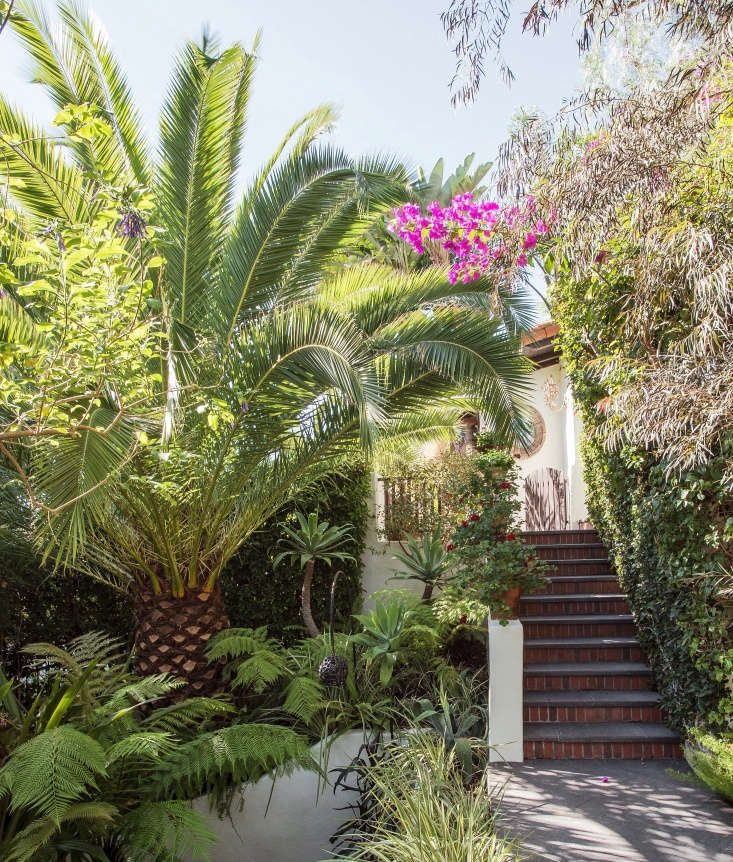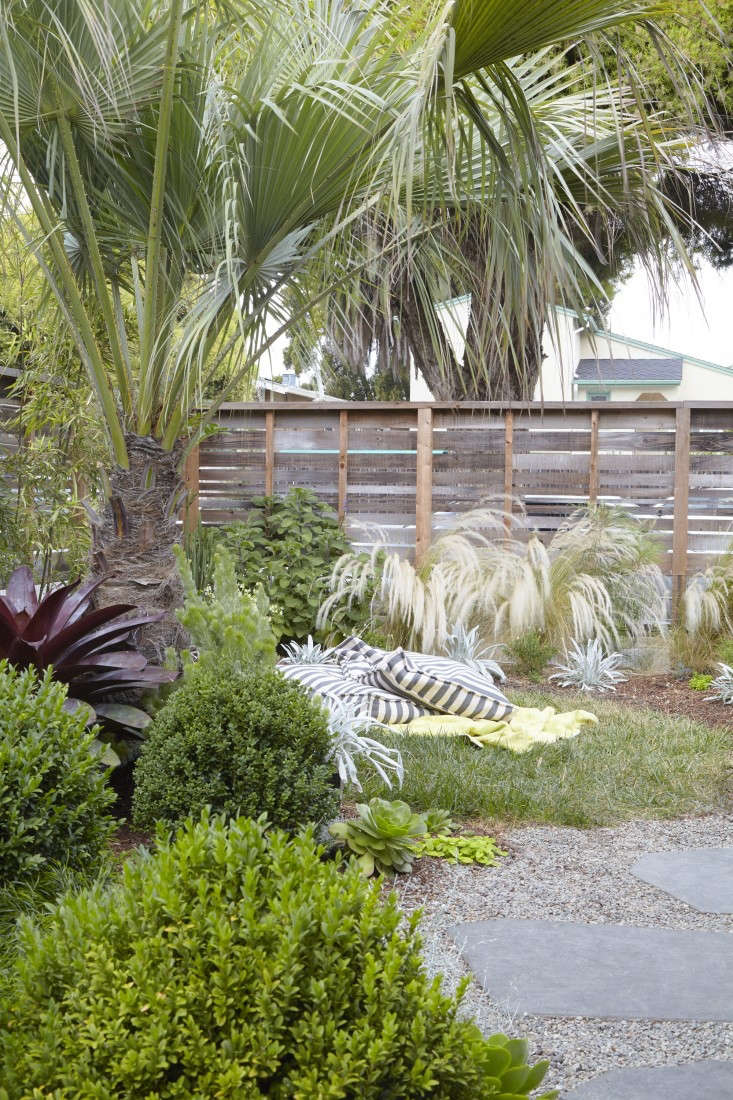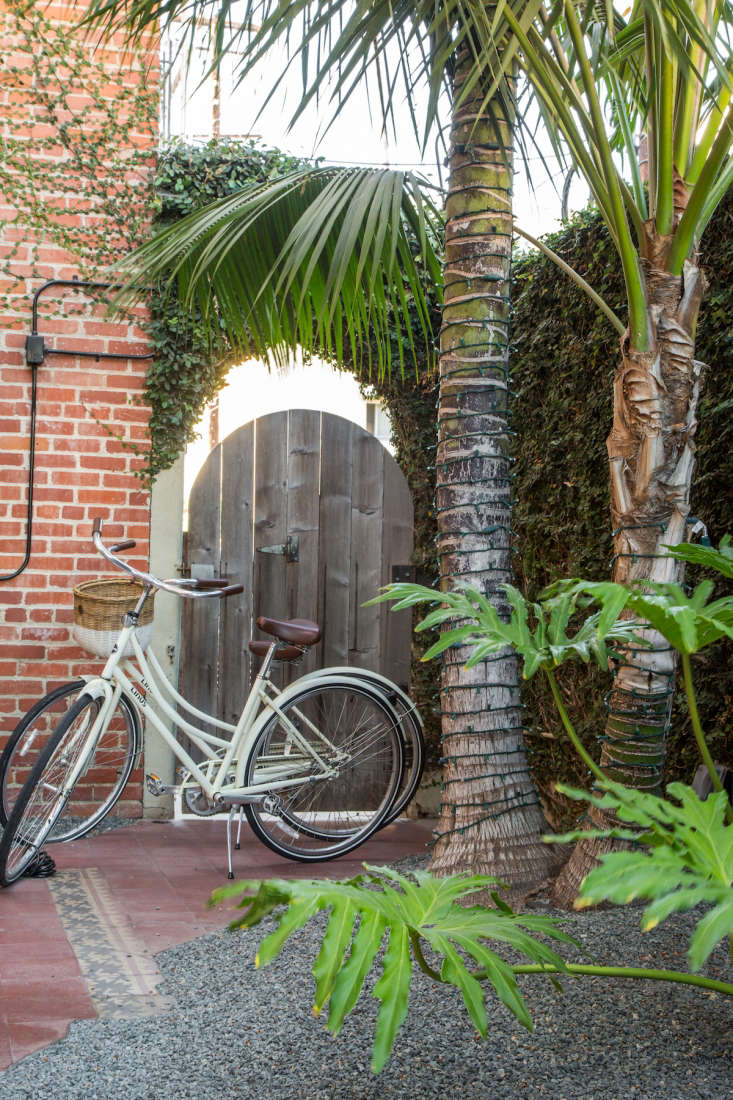Palms, Arecaceae: “Palm Family”
The palm tree: With its tall, slightly curving trunk festooned with a topknot of bright green fronds, it is a ubiquitous and iconic image that calls to mind associations both frivolous (tropical vacations, cartoons of desert islands) and sacred (Palm Sunday, 30 mentions in the Bible, 22 mentions in the Koran). In the world of horticulture the palm represents an ancient plant form that first appeared in fossils dating back 80 million years, during the late Cretaceous period when dinosaurs were still walking around. We refer to them as palm “trees,” but botanically speaking they aren’t trees at all.
Read on for everything you need to know about palms.

Researchers believe that palms, which are monocots, split off early from the rest of flowering plants and developed distinctive characteristics different from actual trees such as oaks, maples, and magnolias. Surprisingly, palms are genetically closer to grasses.


Another big difference is the way in which the palm grows taller. True trees grow upward as the branches and twigs in the crown of the tree elongate. However, the vertical growth of palms comes from just one growth point, the apical meristem, at the tip of the trunk. If this point is badly damaged or removed, the plant cannot continue to grow and will die. In the case of hearts of palm, a popular salad ingredient, the “heart” is the growing point of the palm and, when it is harvested, the palm is killed.

Palm trees have a long history of providing us with useful products, including food items such as palm oil, coconuts, betel nuts, açaí fruit, and dates. We also get materials for construction, rattan furniture, coir fiber, animal feed, and palm wine. But palms, which are evergreen “trees” and shrubs and, sometimes, vines are probably most familiar to us for their extensive use in landscape design. And while they are most commonly associated with tropical and subtropical climates, there are more than 2,500 species in the Arecaceae family and some varieties can be successfully grown in more moderate conditions. If you are interested in adding palms to your landscape, here are some general tips for growing these distinctive plants.

Cheat Sheet
- Do your research. Most palms grow best in USDA zones 8 to 10, but with so many choices available, make sure you choose a palm that will grow well in your climate.
- Some palms grow very large. Will you have room for it when it is fully grown?
- If your garden space is limited, you might be better off selecting a small variety that can be grown in a container.
- In cooler regions, plant your palm in the spring after the last frost so it has plenty of time to get established before winter arrives.

Keep It Alive
- Good drainage is essential to a palm’s happiness.
- Young palms often do better in partial shade or dappled sunlight.
- Most palms like rich soil with plenty of organic material.
- Pruning is usually unnecessary except when clipping off dead fronds for cosmetic purposes; this should be done with caution as some palms continue to take nourishment from fronds long after they appear to be lifeless.
- Keep your palm well watered until it is established.

Finding the perfect palm to grow can be a daunting project. Some popular varieties include the native small sabal palm, also known as the cabbage palm, which is the state tree of both Florida and South Carolina. It is known for being virtually maintenance free and does well in sandy soil. However, it can grow quite large, as tall as 80 feet in the right conditions.

Smaller choices include the pygmy date palm (Phoenix roebelenii), which is popular in California gardens and tends to top out at six to 10 feet. This palm is elegant and slender and can be purchased with either multiple trunks or a single one.

The parlor palm (Chamaedorea elegans) is native to Mexico and does well both as a houseplant and outdoors in the garden. It prefers shade, can tolerate drought (although it likes humidity), and grows slowly to a height of four to six feet.
See more about palms in Palms 101: A Field Guide to Planting, Care & Design and more of our favorite tropical houseplants in Tropical Plants 101 and Houseplants 101, including:
- Fiddle-Leaf Fig Trees: A Field Guide to Planting, Care & Design
- How to Make an Orchid Bloom Again
- Philodendrons 101: A Field Guide to Planting, Care & Design
- How to Keep an Indoor Citrus Tree Happy
- Maui Beach Cottage with a Tropical Garden
- Orchids 101: A Field Guide to Planting, Care & Design
Finally, get more ideas on how to successfully plant, grow, and care for palm with our Palm: A Field Guide.
Interested in other types of trees? Get more ideas on how to plant, grow, and care for various trees (specimen, deciduous, evergreen) with our Trees: A Field Guide.
Interested in other tropical plants for your garden or indoor space? Get more ideas on how to plant, grow, and care for various tropical plants with our Tropical Plants: A Field Guide.













Have a Question or Comment About This Post?
Join the conversation (0)